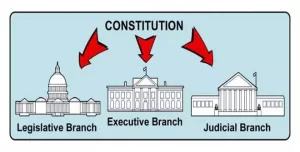“You can’t fight City Hall.” It’s one of those sayings that sum up recognized truths. It generally suggests that you can’t win when challenging a bureaucratic system like the government. But in the early 1990s a bunch of us in Sioux Falls did just that. We convinced voters it was prudent to change the form of city government from one that was fundamentally flawed to one that has enabled civic success.

We Had a Weak City Commission System
In the 1980s, Sioux Falls had a weak and increasingly dysfunctional city government. Five city commissioners each managed one or more city departments or roughly twenty percent of the business of the city. Not surprisingly, there were problems.
City commission jobs paid well. So elections sometimes attracted candidates who were untrained to supervise and manage people. Problems naturally occurred when an unqualified manager won. We saw inexperienced people take over the day-to-day management of dozens or even hundreds of city employees. That didn’t work very well. Voters should fill leadership positions and legislative seats, not management or technical positions.
At any rate, the Sioux Falls city commissioners frequently bickered, and city government was unable to speak with one voice. City Hall could not provide much needed community leadership. The public was frustrated, and I was too. Eventually, I decided to do something about it.
Change Came from Outside City Government
In the early 1990s, I gathered a group of community leaders to explore better ways to run our city. At the time, I was involved in the leadership of the Sioux Falls Chamber of Commerce, so I had the opportunity to get the attention of the right people. We recruited a diverse group for our steering committee with representatives from business, labor, retirees, education and other interested groups. Initially, Dale Froehlich and I led the effort to design a better system and draft a charter. Later, Pauline Poletes and Bill Peterson led the political campaign and public information effort.
After reviewing all the options, the group decided to propose a strong mayor form of government. Our goal was to provide a chief executive position responsible for running the business of the city. We wanted a leader who could speak with confidence on behalf of the city.
Early on, we decided to use a state constitutional power called “home rule” to design the government the way we thought it should be for South Dakota’s largest city. Once we had a model in mind, I created the first draft of a new home rule city charter.
The Mayor-Council Model Has Been a Home Run
Unsurprisingly, some of the city commissioners vocally opposed our proposal. Politicians and bureaucrats are notoriously effective at guarding their turf. The opposition mainly tried to raise fears about the strong mayor position and about the use of home rule. After a healthy public battle, residents got their chance to decide. Eighteen thousand votes were cast. When they were counted, our proposal squeaked by with a 156-vote margin! Looking back, I can’t imagine where our city would be today if voters hadn’t approved the change.
The new form of government has been a big home run for our city. It solved the problems we were trying to fix. Mayors under the system have been able to run city government in a centralized, efficient manner. They have also been able to speak for the city, providing the leadership our community needs. But inevitably our design has not been perfect.
Our New Structure Isn’t Perfect
The new city government structure was radically different from the one it replaced. I wouldn’t expect perfection in such a comprehensive overhaul. Ideally, the system would be tweaked and improved as experience provided feedback about what worked well and what could be improved. But that’s not how government operates.
In business, I had a great deal of experience changing the status quo and improving systems. Unlike in business, where owners and employees are motivated to improve systems, the incentives are the opposite in government. Politicians and bureaucrats are generally rewarded when they successfully resist change. The status quo is often guarded tenaciously in government, even in the face of opportunities for improvement. Here’s an example.
City Council Intended to be a Strong Partner
We intended that the city council would be a strong partner of the mayor. The council is a part time, legislative body with control of the purse strings. As the city charter says, “all powers of the city shall be vested in the city council.” We thought the council would provide the long-range policy guidance needed to complement the mayor’s focus on daily operations. While many incredible people have served on the city council over the past thirty years, it has never quite performed as we intended.
The council sometimes seems to lack a strong, separate identity. All too often, it has done little more than rubber stamp the mayor’s proposals, both good and bad. That has occasionally created big messes, such as the ugly and incomplete Village on the River project in downtown Sioux Falls.

That project was rushed through the approval process without much transparency or chance for public dialogue. Some city council members and many citizens raised good questions about it. A pause would have been appropriate, and perhaps likely if the council had been able to do its job right. Instead of the promised fifteen-story building housing two hotels and a bunch of retail, we are left with a homely seven story parking garage with an unclear future.
Mayor’s Job Can be Tough
Another related problem with the city government model we put in place is that the demands on the mayor can sometimes be too great. Some mayors have told me the job can be overwhelming, especially when they must run city council meetings after a tough day at the office. Given all that, I think I know what would fix these problems.
We went too far in our effort to ensure strong, centralized leadership by the mayor. We failed to adequately separate the executive and legislative functions in city government. Of course, the mayor is the city’s chief executive. Unfortunately, we also provided that the mayor chairs city council meetings and even casts the deciding vote on ties. In short, the mayor has a large measure of control over the council. All things considered that was a mistake.
Separation of Powers is Important
Separation of powers provides necessary checks and balances on power. In government it is a tried-and-true way to avoid the pitfalls of an individual or group exercising too much power. Can you imagine the President having the power to run congressional sessions? Or the governor running the legislative session? Of course, that wouldn’t work well for federal or state government, just as it doesn’t in our city.

Based on what we have seen, I would amend the city charter to separate the executive and legislative branches of our city government. I have proposed this idea a couple of times to the charter review commission, but they aren’t interested. Inevitably, those who are part of the system aren’t motivated to rock the boat. As they say, “you can’t fight City Hall.”
Big Success Overall
Fortunately, we got the change mostly right. Sioux Falls city government has been strong and effective under the system we put in place in the 1990s. Our model gives mayors the chance to provide the strong centralized leadership our community had been lacking. Those of us who brought about the change have been pleased with the results and are proud of the system we created.
Thanks for your continued efforts to improve government at the local and state level.
Joe,
I appreciate your past efforts to fix the Council issues. It has become a “rubber stamp booster club” for the Mayor’s agenda.
Let’s work to fix this unbalanced form of government.
We need an overhaul of representation, accountability and transparency for the good citizens of Sioux Falls.
I agree with you Joe. A couple of thoughts I have on this. One, change commission positions to being full time, or allow them to have a staff member to do research for them. Two, would be to have and Ombudsman (Janet Brekke was a big advocate of this), to be that person the Council Members can rely on. I think an Ombudsman for different areas of Sioux Falls would be great.
As I campaign in District 14, I find many people talk about issues they bring up with the city and don’t get resolved; tree cleanup, unsupervised children, etc. I ask if they contact their City Council person and they usually respond “no”. With and Ombudsman approach, do you think we would have better accountability to areas, and more communication with residents?
I fought city hall from 2000 to 2008. The charter and ordinances do not allow appeals into court. I won constitutionally in SD Supreme Court. My litigation cost $40,000 which I didn’t ask for and did not recover.
Maybe Home Rule Charter works for development but it doesn’t work for citizens. Most projects are boondoggles that keep the city in debt but don’t do anything for infrastructure.
In 2021 I moved to a neighboring city. It’s refreshing to enjoy a home town life where there’s government of, by, and for the people.
The change in government structure was an excellent move. The overhaul fixed a lot of flaws in a city government that essentially had elected managers. Other than the mayor, who is the chief executive, City Council positions should not be full-time jobs. The City Council should be a part-time, policy-setting body, like the School Board. Leave the day-to-day management to experts who are encouraged to be transparent so that they can be monitored by the public, as well as the mayor and Council members.
Always the reformer – great work, Joe! Keep it up! We need you here in Los Angeles. 🙂